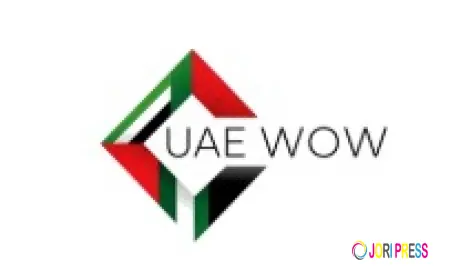Singapore Home Insurance Market 2030: Demand & Forecast
Initiatives like the Building and Construction Authority's (BCA) efforts to enhance property safety and resilience contribute to this trend.

Introduction
The Singapore Home Insurance market is entering a new phase of growth and innovation, driven by changing consumer expectations, advancements in technology, and a heightened focus on property protection in an increasingly unpredictable world. Homeownership remains a central aspiration in Singapore’s urban society, with both private and public housing forming the backbone of its real estate landscape. As property values continue to rise and lifestyles evolve, the need for comprehensive and flexible home insurance solutions has never been more urgent.
In 2024, the Singapore Home Insurance market was valued at USD 702.90 million and is projected to reach USD 1,145.89 million by 2030, reflecting a steady CAGR of 4.56%. This growth trajectory is underpinned by several pivotal forces: the rapid adoption of smart home technologies, growing awareness of environmental sustainability, and the increasing demand for policies that provide extensive coverage against a broad spectrum of risks.
Market Overview
The home insurance sector in Singapore is undergoing significant transformation. Historically, policies were primarily focused on structural coverage and protection against basic perils such as fire, flood, and theft. However, the modern homeowner’s needs have expanded. Today’s insurance products must account for technological integration, high-value home contents, luxury fittings, and even potential cyber risks linked to smart devices.
The market’s evolution has been influenced by several socioeconomic and technological factors. Rising incomes, increasing property investments, and the expansion of high-value residential areas—particularly in the Central region—have fueled demand for tailored policies. Additionally, shifts in work-from-home culture, heightened by recent global events, have made residential properties even more central to people’s daily lives, further emphasizing the importance of securing these assets.
Download Free Sample Report: https://www.techsciresearch.com/sample-report.aspx?cid=27054
Emerging Trends in the Singapore Home Insurance Market
1. The Smart Home Revolution
One of the most defining trends in Singapore’s home insurance landscape is the rapid integration of smart devices. Homeowners are installing advanced security systems, smart locks, automated lighting, voice-controlled appliances, and integrated smoke detection systems. While these devices enhance safety and convenience, they also introduce new vulnerabilities—especially in the realm of cybersecurity. Insurers are now crafting policies that protect not just physical assets but also digital infrastructure.
2. Rise of Green and Sustainable Home Insurance
Sustainability has shifted from being a niche consideration to a mainstream priority. As more residential developments incorporate eco-friendly designs—such as solar panels, rainwater harvesting systems, and energy-efficient appliances—insurers are responding with policies that cover these assets. Many also offer premium discounts for homes certified under Singapore’s green building standards.
3. Customization of Coverage
The traditional “one-size-fits-all” insurance model is fading. Today’s homeowners demand flexibility—choosing coverage for specific risks such as natural disasters, accidental damage to luxury fittings, or protection for valuable art collections. Customizable add-ons and modular policies are increasingly popular.
4. Digital Transformation in Policy Management
From purchasing insurance to making claims, the process is becoming more digital and frictionless. Mobile apps, AI-driven claim assessments, and instant policy approvals are making home insurance more accessible to a wider audience.
5. Incentive-Based Risk Reduction
Insurers are now encouraging homeowners to adopt preventive measures. For instance, installing smart security cameras or fire suppression systems can lead to lower premiums. This trend is fostering a more proactive approach to risk management.
Market Drivers
1. Increasing Property Values
Singapore’s real estate prices remain among the highest in Asia, making adequate insurance coverage essential. As property investments grow, so does the value at risk, leading to higher demand for comprehensive coverage.
2. Smart Technology Adoption
With the proliferation of IoT-enabled home devices, there’s a rising need for coverage against device malfunction, cyber breaches, and related damages.
3. Rising Risk Awareness
Events such as unexpected flooding, fires, or structural damages have heightened public awareness about the importance of home protection.
4. Government Initiatives and Regulations
Regulatory frameworks and public campaigns promoting property insurance are reinforcing its importance, especially in high-density residential areas.
5. Shift in Demographics
An influx of expatriates and a growing middle-class segment with higher disposable incomes are creating new market opportunities for premium and specialized insurance products.
Challenges in the Market
Despite its growth potential, the Singapore Home Insurance market faces certain hurdles:
- Consumer Perception: Some homeowners still underestimate the need for comprehensive coverage, especially those living in government-built flats where basic fire insurance is mandated but insufficient.
- Cybersecurity Risks: As homes become digitally interconnected, insurers face the challenge of quantifying and managing cyber-related claims.
- Intensifying Competition: With many local and global players in the market, differentiation through value-added services is becoming critical.
Industry Key Highlights
- The Central region is the fastest-growing market segment due to its high concentration of luxury residences, expatriate housing, and rising property values.
- Comprehensive coverage is the preferred policy type, offering structural, contents, liability, and disaster protection.
- Smart home integration is reshaping underwriting models, with risk assessments now factoring in the presence of IoT devices.
- Insurers are offering green property discounts, reflecting the rise of sustainability-conscious consumers.
- Mobile-first policy management tools are making insurance purchases more convenient.
Segmentation Analysis
By Coverage
- Comprehensive Coverage dominates, offering end-to-end protection for both structure and contents.
- Dwelling Coverage focuses primarily on the building’s physical integrity.
- Content Coverage safeguards furniture, electronics, jewelry, and other valuables.
By End User
- Landlords seek coverage for rental properties, often including liability protection.
- Tenants opt for policies safeguarding personal belongings and liability within rented spaces.
By Provider
- Insurance Companies lead the market through direct sales and bundled offers.
- Insurance Agents/Brokers continue to play a key role in providing personalized guidance.
By Region
- Central Region: Fastest-growing due to luxury real estate density.
- Other Regions: Steady growth driven by suburban residential expansion.
Competitive Landscape
The Singapore Home Insurance market is highly competitive, with both multinational insurers and local players vying for market share. Key companies include:
- AIG Asia Pacific Insurance Pte. Ltd.
- Singapore Life Ltd
- FWD Singapore Pte. Ltd.
- Chubb
- Great Eastern Life Assurance Singapore
- Etiqa Insurance Pte. Ltd.
- MSIG Insurance (Singapore) Pte. Ltd
- HL Assurance
- Trust
- SBI General Insurance Company Limited
Competition is intensifying around product innovation, digital customer service, and value-added offerings such as home emergency assistance or personal cyber protection.
Future Outlook
The next decade is set to bring even greater integration between home insurance and technology. Expect to see:
- Wider adoption of AI-based risk assessments for personalized premium calculation.
- Expansion of cyber insurance as smart homes become standard.
- Increased partnerships between insurers, smart home device manufacturers, and property developers.
- Eco-focused policies that reward sustainable living choices.
By 2030, Singapore’s home insurance market is likely to be more tech-enabled, customer-centric, and sustainability-oriented, with a strong emphasis on preventive rather than reactive risk management.
10 Benefits of the Research Report
- In-depth Market Insights – Comprehensive understanding of Singapore’s home insurance industry.
- Data-Driven Forecasts – Reliable projections up to 2030 for strategic planning.
- Trend Identification – Spotting emerging opportunities in smart home integration and green policies.
- Competitive Benchmarking – Evaluating key market players and their strategies.
- Segmentation Clarity – Detailed analysis by coverage, end-user, provider, and region.
- Risk Assessment Guidance – Highlighting potential market challenges and mitigation strategies.
- Policy Innovation Insights – Understanding the shift toward customized and tech-driven policies.
- Consumer Behavior Analysis – Insight into the evolving demands of landlords and tenants.
- Investment Opportunities – Identifying growth areas for insurers and investors.
- Strategic Recommendations – Actionable insights for business expansion and customer engagement.
Conclusion
The Singapore Home Insurance market is poised for a new era—one defined by personalization, technology, and sustainability. As consumer expectations shift toward holistic, flexible, and tech-enabled protection, insurers that embrace innovation will be best positioned to lead. With steady economic growth, rising property values, and a tech-savvy population, the market’s fundamentals remain robust, promising strong growth through 2030 and beyond.
Contact Us-
Mr. Ken Mathews
708 Third Avenue,
Manhattan, NY,
New York – 10017
Tel: +1-646-360-1656
Email: [email protected]
Website: www.techsciresearch.com
What's Your Reaction?
 Like
0
Like
0
 Dislike
0
Dislike
0
 Love
0
Love
0
 Funny
0
Funny
0
 Angry
0
Angry
0
 Sad
0
Sad
0
 Wow
0
Wow
0


















































